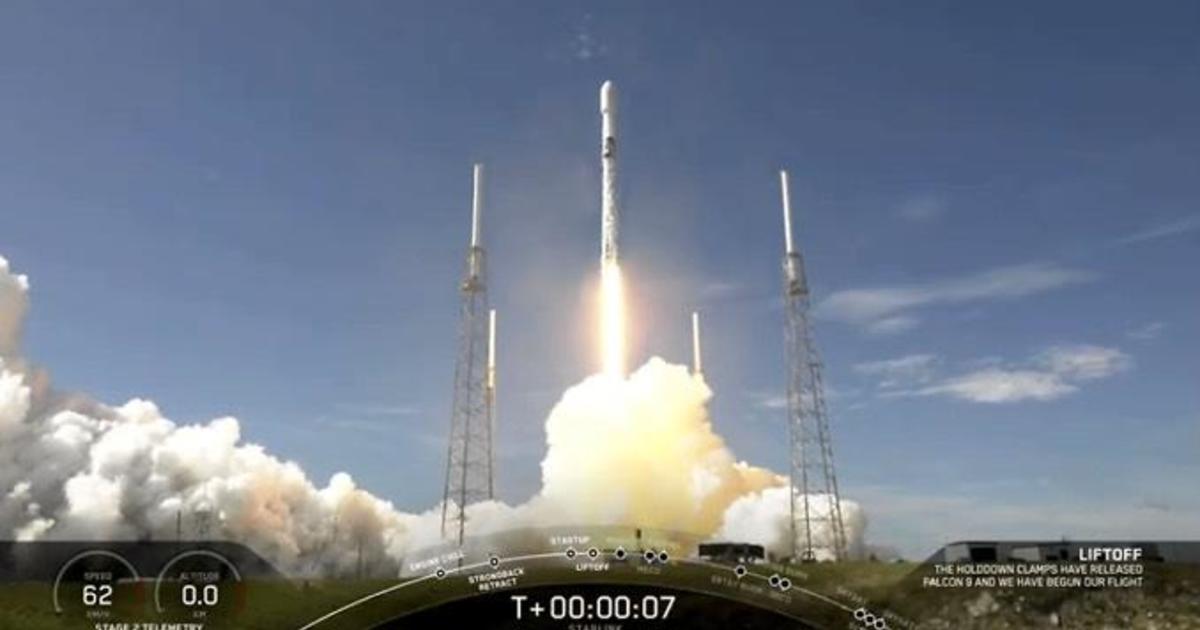A SpaceX Falcon 9 rocket using a first stage making a record sixth flight thundered away from Cape Canaveral early Tuesday, lifting 58 more Starlink internet satellites into orbit along with three Planet-owned SkySat commercial reconnaissance satellites.
Following an engine test firing Monday, the well-traveled first stage roared to life at 10:31 a.m. EDT, quickly pushing the 229-foot-tall rocket away from pad 40 at the Cape Canaveral Air Force Station.
A SpaceX Falcon 9 rocket using a first stage making a record sixth flight climbs away from pad 40 at the Cape Canaveral Air Force Station carrying 58 more Starlink satellites and three SkySat commercial imaging satellites owned by Planet.
SpaceX
After boosting the vehicle out of the thick lower atmosphere, the first stage fell away and flew itself back to landing on an off-shore droneship a few moments before the second stage reached orbit. Two other SpaceX ships were standing by to recover the two halves of a previously flown nose cone.
The booster’s sixth successful landing pushed SpaceX’s record to 58 first stage recoveries, 39 on droneships.
The second stage, meanwhile, released the three SkySats, owned by the Earth-imaging company Planet, about three-and-a-half minutes later with the Starlinks were expected to follow suit about a half hour later. Deployed in a single batch, the 58 satellites will slowly spread out before boosting themselves to their operational altitude.
With Tuesday’s launch, SpaceX has now put 655 Starlinks into orbit as the California rocket builder rapidly builds out a planned constellation designed to deliver high-speed internet service to customers around the world. Initial service across the northern United States and Canada is expected to debut later this year.
SkySats 19, 20 and 21 will round out Planet’s fleet of compact satellites producing commercially available high resolution imagery for use by government agencies and the private sector. Planet also operates more than 100 smaller Dove satellites providing lower-resolution, wide-angle views.
The Falcon 9 first stage completed a record sixth flight with a pinpoint landing on the SpaceX drone ship “Of Course I Still Love You.”
SpaceX
The new SkySats, built by Maxar Technologies, were launched under a “rideshare” program that enables small satellite operators to hitch rides aboard SpaceX rockets when room performance margins are acceptable. Three other SkySats were launched in a Starlink mission earlier this summer.
“By taking advantage of SpaceX’s rideshare program, we were able to get these satellites launched much faster compared to a dedicated launch,” wrote Mike Safyan, Planet’s vice president of launch operations, in a blog post earlier this month.
“In addition, by splitting the payload across two launches, we’re able to phase the (new) SkySats into their respective (orbital planes) much faster as well, all of which results in Planet’s customers benefiting from these enhanced products much sooner than any other provider can offer.”
